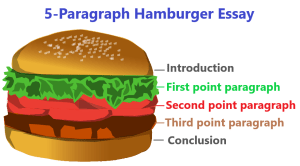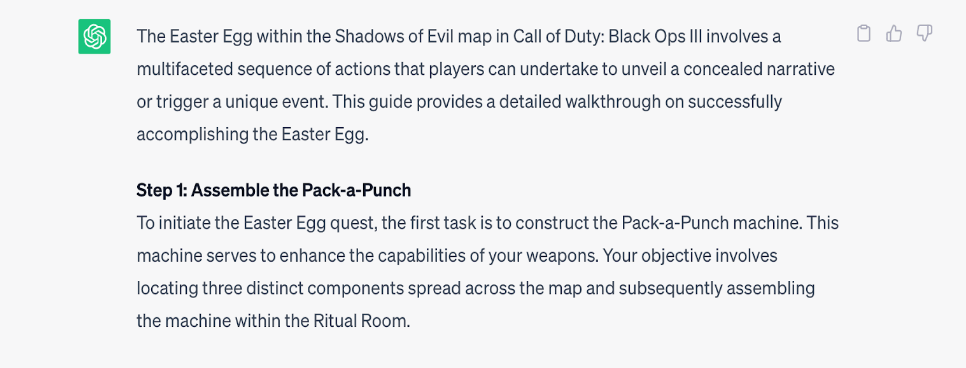
by Lauren Brown
Lauren Brown is a biology major and film minor from Firestone, Colorado. She “adores writing” and enjoyed the freedom in experimentation with voice in this essay. She says, “I loved being exposed to different forms of writing a paper that all fell under analysis or research. There are so many ways to be flexible with style and incorporate your own voice that I was able to see, analyze, and try myself.” Lauren also wanted to explore “how education often sucks the joy out of writing as an artform and makes it into something easily replicated by a site like ChatGPT.” She is proud to have created something unique and different from the pieces she had written during high school. Lauren is also “just a gal with a ridiculously large earring collection and a love for a lil treat,” as well as a documentary addict and crime fan. She says that her crime fascination is what led to her major in biology which she “intends to use to pursue a master’s degree in forensic science.”
“I would rather die of passion than of boredom.”
Words from Vincent Van Gogh that, at first glance, seem like an obvious statement. No one really likes to be bored when it comes down to it. Simply asking someone if they agree with the quote will get you a chorus of agreements and nods. However, we often fail to consider how comfortable our boredom can be. There is nothing easier than maintaining a routine and staying in the familiar flow of things. Van Gogh’s quote is suddenly something we’d prefer to discard. To quietly set aside and ignore. After all, how trustworthy can a guy who cut off his own ear be?
The answer, in my opinion, is very.
That isn’t to say that Van Gogh could have sent Rachel flowers instead of his ear. I think most of us prefer displays of affection more akin to chocolate and plants than to body parts. But that doesn’t take away from the fact that Van Gogh’s perspective here is valuable. Boredom may be comfortable, but passion is exciting. Passion is alive. It is unique to every individual. It is often meant to be shared with others. This is where writing comes into the picture. Van Gogh may have been speaking about painting, but writing is the art form we encounter and use regularly. It is also, unfortunately, the art form where school tends to smother the ‘art’ element.
In the classroom, we seek to check the expected boxes as we go. And the fact that AI programs, which are still infants in their development, can easily replicate a basic essay at the high school level speaks volumes. We have not yet taught these programs how to be creative. But we have been taught how to not be creative in our own work. We’ve lost how putting words to the page is a form of brush stroke, an illustration we bring from our mind to the page. There is magic to drawing in the audience, outlining your exigence, and accomplishing your purpose. That magic has a name: rhetorical choices. Choices we make as writers to engage our audience and accomplish our goal of the paper. Writing is filled with possible choices. There are some rules, of course, but breaking those rules is a choice too. Many of us have forgotten why this is important in the face of programs like ChatGPT. But it’s by seeking out papers that aren’t boring, and understanding how they are successful, that we regain our passion and artistic ability.
The first step is the title. An obvious, but not obvious, thing. We are usually directed to focus on the ‘hook’ of our introduction, but the title actually serves as the worm on that hook to lure the reader in. I’ve become accustomed to straightforward, direct titles. For example, “The Significance of Citation and Ethical Source Usage in Academic Essays” might be long-winded but is fine. It is exactly what I would expect from a research paper about that topic. Reading it yourself will likely have you agreeing. But that same comfort in boredom is at play — it is passionless. And when I tell you that the title was generated by AI, for an AI-generated paper on the topic, it isn’t any more surprising than thinking a person wrote it. That is until you hold it up against something significantly better.
Allow me to introduce “Bumping into Mr. Ravioli” by Adam Gopnik. A fun title that sparks curiosity. Especially when you realize that it’s not the title of a short story. No, it’s the title of a research essay published in The New Yorker. The two papers share a genre yet are entirely different based on the title alone. Gopnik easily executes a silly, daring title that he knows will capture his audience. After all, the readers of The New Yorker are curious intellectuals bound to probe further. Further digging reveals a casual, story-focused research essay on Gopnik’s daughter Olivia, her strange imaginary friend (Mr. Ravioli), and the busyness of New Yorkers. It is unique and beautifully done. We’ll look at it more in a bit.
There also exists a middle ground; “Life’s a Fashion Show (If You’re a Teenage Girl)” by Madeline Murphy is a perfect example. While the title does reveal what the paper is about, it also carries character and a little attitude. As an author published in a student journal, Murphy needs to spark her audience’s interest in what the paper entails as opposed to just the silliness aspect. The choice is deliberate and well-executed for her audience. As a teenage girl myself, the title got my attention and I wanted to read the paper. In her research essay, Murphy discusses the complicated nature of being a teenage girl in a society that puts them under extreme scrutiny. She could have titled it “Analyzing the Difficulties of Dressing as a Teenage Girl in Society.” But Murphy is not an AI bot. And most of us would not click on that title.
Writers: 1 AI: 0
Choosing the title is the opening choice that evokes emotion, curiosity, or both from your audience. Titles should give away some of the personality of the paper as you open up to the true style of an essay. That true style is born from the essay’s foundation: word choice.
Word choice is the backbone of an essay. Without the use of effective diction, how will your readers know you take your exigence seriously? It is not an inherently easy task. Gopnik and Murphy must balance the expectations for dynamic vocabulary in the genre with their looser, personal perspective. Murphy especially finds herself needing to do this well. She doesn’t already have the respect of her audience through her publisher like Gopnik. In fact, her audience expects less because she is a student. And as a student myself, I didn’t expect to be impressed. I figured, oh, she’s a student just like me. How good could it be? But Murphy immediately proved me, and her other readers, wrong. Sentences like: “ ‘Not like other girls’-syndrome (an informal name) is a social phenomenon: in an attempt to avoid the suffocation of the patriarchy, teenage girls separate themselves from the ‘other girls’ (the monolith: the girls who dress basically)” showcase Murphy’s skill with her choice of diction (Murphy). Her vocabulary is excellent and fits the scenario. The sentence is beautifully structured to match. It provides context and defines terms her audience may not know in a way that is engaging and intelligent. Her voice isn’t lost either. Murphy still communicates a personal connection to the matter with the undertone of attitude we saw in the title. It is attention-grabbing and well done. Murphy earned my respect and had me processing every word she chose for the essay. That’s the power of rhetoric.
Gopnik’s task is both easier and harder. He doesn’t need to earn the respect of his audience, even in his deviation from the classic research paper style. But he is at higher risk of losing it. To maintain the story-like flow and incorporate strong diction, Gopnik alternates between the two styles: “ ‘How did you spend the day?’ Martha and I now ask each other, and then, instead of listing her incidents, she says merely, ‘Oh, you know…just…bumping into Charlie Ravioli,’ meaning, just bouncing from obligation to electronic entreaty, just spotting a friend and snatching a sandwich, just being busy, just living in New York” (Gopnik). Within a single sentence, Gopnik jumps from casual diction to formal diction, and then back to casual diction. He toys with the conventions of the research genre and brings the audience along for the ride. Gopnik’s purpose isn’t to drill into you what the definition of busyness is. No, it’s to keep an open dialogue about what he’s observed in his daughter Olivia (exigence) and the reflections he’s made as a result (purpose). The diction effectively illustrates how the discussion is casual but meant to be truly considered by the audience. I know I found myself reflecting on his words. There is more to diction than ‘good’ vocabulary words. It’s how they’re implemented. They’re meant to carry the author’s voice, support their purpose, and keep the audience engaged in understanding the work they’re reading.
Writers: 2 AI: 0
Beyond word choice, there is also the distinct choice Murphy and Gopnik make: getting personal. Both of their essays are written from first person perspective rather than the cold, past-tense third person many of us are accustomed to. There is something distinctly them in their writing. They each choose to incorporate their own stories into their respective essays. That can be hard to do (I wasn’t brave enough to try that here) but it is very effective. Murphy incorporates it as part of her opener. “I love seeing where the clothes take me, I love treating my outfits as an art form. I’ve lived most of my autonomous life as a teenage girl: an identity that has no doubt shaped the way I dress” (Murphy). It is immediately made clear that Murphy knows what she’s talking about from experience. The paper comes from someone who really knows and who truly cares. She then proceeds to follow up her personal introduction, which discusses how important clothes are to her, with the lines: “The mall is not a respected place. Shopping is not a respected hobby” (Murphy). It is a powerful choice that attacks her own interests. And it would not have been possible without that first-person point of view, without the personal beginning. It makes you take her more seriously, disregarding the “student writer” title. The rhetorical choice was the right one, hooking the audience and establishing a strong tone. Her purpose is to convey the societal issues teens face, a subject meant to be taken seriously.
Of course, AI accomplishes rhetoric as well. If lines like, “Comprehensive note taking during the research phase is essential, recording full bibliographic details and key ideas for accurate citation later on” don’t charm your socks off I’m not sure what will (“Explain why citation”). That is to say that AI papers come nowhere close to what Murphy did in her paper. There is no way to replicate the human connection to the audience that authors choose to put in their papers. It can be difficult to utilize that in the face of the rigid writing standards that have been enforced throughout school, especially in a somewhat serious essay. I’m struggling with it now. But it is the attempt, the visible brush marks we leave in the words on the page, that makes our writing human. That makes writing an art form that AI software can’t simply copy.
Writers: 3 AI: 0
As I mentioned earlier, Gopnik takes a similar approach to Murphy, though he leads the essay to walk the line between a short story and a research essay. Part of the immersion is how Gopnik chooses to incorporate his sources. We’re used to seeing the classic “for example” followed by a quote. You’ve even seen one in this essay. It accomplishes what it needs to. But Gopnik makes the interesting choice to weave in his own personal life with the sources he uses. The main source in the article is Gopnik’s sister, “a developmental psychologist who specializes in close scientific studies of what goes on inside the heads of one- and two- and three-year-olds” (Gopnik). He goes on to quote a conversation with her, where she states that “an imaginary playmate isn’t any kind of trauma-marker” (Gopnik). The source is credible yet included so casually. There is no works cited to be found at the end of the paper either. Yet in this scenario, with the way the paper is written, it works. His purpose isn’t to rattle off a bunch of sources and statistics. It’s to examine the strange occurrence in front of him and how society may have shaped his daughter in this way. I love the way it flows like a conversation rather than a dragging research paper. And really, in a paper about busyness, who would take the time to research when they could just ask a family member who’s an expert? It suits the subject and is more fun.
AI tends to defer to the “classic” citation style. There is nothing wrong with that. This paper has that too. And yet. Something I learned in preparing to write this paper is that if you tell AI to use sources in its essay, it will. But AI also “hallucinates.” Essentially there are limitations to what it can do based on what parts of the internet it knows. So, when you ask for sources, it’ll add them, with the caveat that they don’t actually exist. For example, this citation: “Gorman, T. (2018). The Role of Citations in Academic Literature. Journal of Scholarly Communication, 45-54” does not exist (“Explain why citation”). It looks real and is quoted in the paper like it is real but is made up. That is because the AI doesn’t care or think. It isn’t trying to reach an audience. It isn’t trying to accomplish a purpose with the paper. It doesn’t have to be correct. It simply seeks to fit the conventions of the genre and subject it’s been asked to write a paper on. There’s no consequence if the sources are made up. I think we know who wins the point here.
Writers: 4 AI: 0
Writers are winning in a landslide. So, I know who I’m siding with (granted, I am the one who made the scoreboard, so take that as you will). AI will always produce something hollow and unoriginal. Human writers only might do that. Up until now, we’ve been encouraged to conform to the basic expectations of high school. But now is the time to break out of that. To produce something that AI can’t replicate with a few instructions. Writing is meant to communicate, inform, and share. I love it, even as I’m still learning to be good at it. We are presented with infinite choices and billions of potential audience members. There is no sense in committing to making art that is boring and doesn’t represent us. Personally, I’d rather die of passion. I hope you would choose the same.
Works Cited
“Explain why citation is important, and how to ethically use sources in an academic essay” prompt. ChatGPT, 22 Aug. version, OpenAI, 1 Apr. 2023, chat.openai.com/chat.
Gopnik, Adam. “Bumping into Mr. Ravioli.” The New Yorker, 23 Sept. 2002.
Murphy, Madeline. “Life’s a Fashion Show (If You’re a Teenage Girl).” Undercurrents: A Journal of Undergraduate Student Composition, 2023.
Van Gogh Museum of Amsterdam: Vincent van Gogh Letters, Letter number: 464, Letter from: Vincent van Gogh, Location: Nuenen, Letter to: Theo van Gogh, Date: October 2, 1884, Website description: Van Gogh Letters Project database of the Van Gogh Museum.








